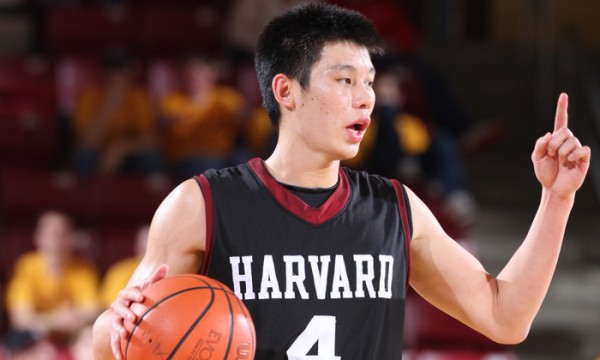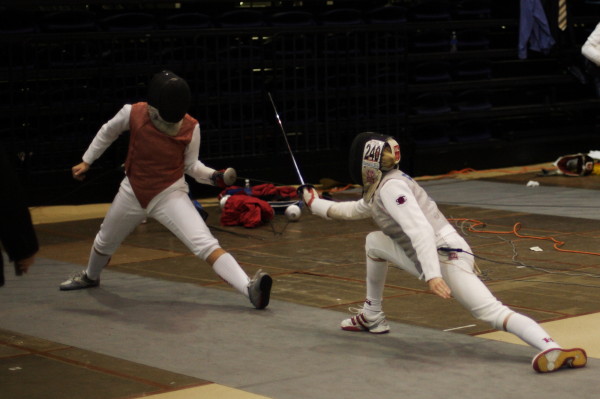 When I was an undergraduate, I remember meeting a few Asian American (a grand total of four) at my school who competed in collegiate sports like cross country, volleyball, and field hockey. While I was researching Asian American cross country participation, I came across this web site that has the NCAA (National College Athletic Association) database on ethnicity and athletes. I was curious as to what sports had the most of Asian Americans and what ones had the least. What I found for the 2011 through 2012 season (the latest data available) surprised me in some ways.
When I was an undergraduate, I remember meeting a few Asian American (a grand total of four) at my school who competed in collegiate sports like cross country, volleyball, and field hockey. While I was researching Asian American cross country participation, I came across this web site that has the NCAA (National College Athletic Association) database on ethnicity and athletes. I was curious as to what sports had the most of Asian Americans and what ones had the least. What I found for the 2011 through 2012 season (the latest data available) surprised me in some ways.
There are two ways to look at Asian American sports participation – through total numbers of participants and through percentages. Some sports might have a seemingly large number of participants, but that amount might be a tiny proportion of all the athletes in that particular sport. If you look at the highest number of Asian American male participants, the sport that had the most was a surprise to me – football! During the 2011-2012 year, there were 463 Asian American college football players. Despite that count, those 463 consist of only 0.5% of all of the American football players in the NCAA. The highest percentage was also a surprise – fencing! 79 Asian American male fencers made up 12.4% of all college fencers.
 For Asian American women, the highest percentage was in synchronized swimming, with the two Asian Americans making up 22.2% of all nine synchronized swimmers. These numbers are so low as to hint at bad data. The most reasonable highest percentage for Asian American women is the same as men – fencing – with 102 fencers making 15.4% of all college women fencers. The high total number of participants were in tennis, with 417 women making up 4.6% of all female tennis players.
For Asian American women, the highest percentage was in synchronized swimming, with the two Asian Americans making up 22.2% of all nine synchronized swimmers. These numbers are so low as to hint at bad data. The most reasonable highest percentage for Asian American women is the same as men – fencing – with 102 fencers making 15.4% of all college women fencers. The high total number of participants were in tennis, with 417 women making up 4.6% of all female tennis players.
Other sports with above average participation (greater than the US Asian American population percentage of around 6%) were squash (8.2% for men and 10.0% for women), gymnastics for men (7.0%), and rifle shooting for women (6.3%). In terms of numbers, sports with more than 100 athletes for both women and include tennis (439 men and 417 women), soccer (366 each for men and women), outdoor track (371 men and 331 women), swimming (275 men and 379 women), golf (214 men and 242 women), and cross country (205 men and 237 women). Other notable numbers include baseball (275 men), rowing (281 women), volleyball (222 women), softball (222 women), basketball (126 women), and lacrosse (106 women).
While I was initially surprised about fencing, in retrospect it shouldn’t be surprising given that a number of Asian Americans fencers represented the US in the 2012 Olympics. I recently stumbled across a fencing club here in Silicon Valley, and when I looked inside at who was training, all but one of the kids were Asian American. I also would have thought that there would be a higher percentage of Asian American women golfers (I actually met one who got a full ride to Stanford after qualifying for the US Open as a teenager). In terms of numbers, it looks like Asians Americans are doing better in areas where quickness and hand-eye coordination can make a big difference as opposed to height or bulk. I am thinking about ball sports like baseball, softball, squash, and volleyball (at least for liberos). Fencing would fall in that category.
This data comes from a snapshot of the 2011-2012 year. It would be interesting to look at the trends over time, particularly as demographic changes make their way across the US population. It would also be interesting to look at how these figures change for divisions (i.e. division I vs division II). We may analyze that data at a later time.
(fencing photo credit: dwightsghost via Creative Commons 2.0)
- Excited
- Fascinated
- Amused
- Disgusted
- Sad
- Angry








